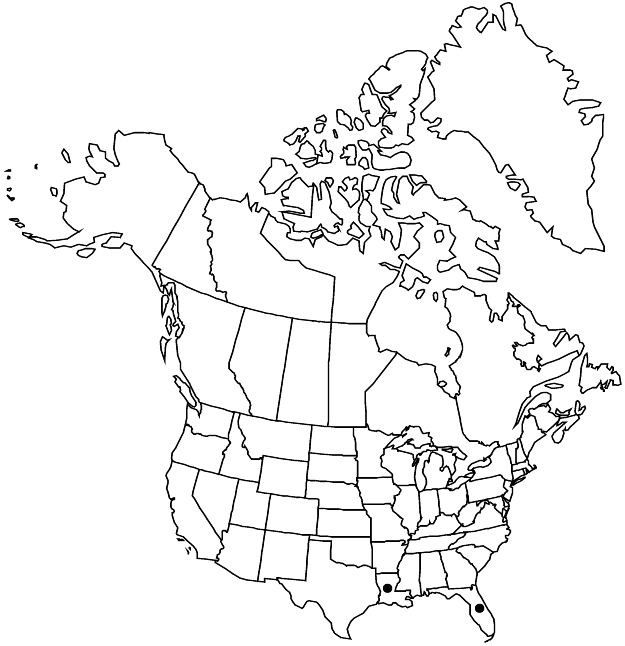Rumex paraguayensis
Anales Soc. Ci. Argent. 5: 160. 1878.
Plants annual [sometimes biennial], glabrous or nearly so, with fusiform, vertical rootstock. Stems erect, branched above middle or in distal 2/3, 20–40 (–70) cm. Leaves: ocrea deciduous or partially persistent at maturity; blade distinctly obovate or sometimes panduriform, 4–6 (–7) × 2–4 (–5) cm, less than 4 times as long as wide, coriaceous, base cuneate or truncate, margins entire, flat or crisped, apex obtuse. Inflorescences terminal, occupying distal 1/2 of stem, usually lax, occasionally rather dense in distalmost part, interrupted in basal 1/2, broadly paniculate, branches spreading. Pedicels articulated in proximal 1/3, filiform or indistinctly thickened, 2.5–6 mm, articulation distinctly swollen. Flowers 10–20 in rather dense whorls; inner tepals obovate-triangular to deltoid, 3–4 × 1.8–2.5 mm (excluding teeth), ca. 1.5 times as long as wide, base truncate, margins distinctly dentate, apex acute to subacute, straight, teeth 2–3 (–4), normally at each side of margins, triangular, straight, 0.4–1.5 mm, equaling or shorter than width of inner tepals; tubercles usually 3, equal or subequal, apex acute or subacute, smooth or minutely punctate. Achenes reddish-brown, 1.7–1.9 (–2) × 1–1.4 mm.
Phenology: Flowering summer.
Habitat: Coastal and riparian sites
Elevation: 0 m
Distribution

Introduced; Fla., La., South America
Discussion
Rumex paraguayensis is closely related to R. obovatus and may be confused with it or, less frequently, with other species having dentate inner tepals (e.g., R. dentatus, R. obtusifolius, and R. pulcher). Rumex paraguayensis and R. obovatus appear to belong to a separate, undescribed subsection.
This species was first reported for North America from Saint Tammany Parish, Louisiana, by J. W. Thieret (1969c). Its status in North America is uncertain; J. H. Horton (1972) excluded it from the list of Polygonaceae of the southeastern United States. I have seen only two immature specimens from Florida.
Selected References
None.
Lower Taxa
"/2" is not declared as a valid unit of measurement for this property.